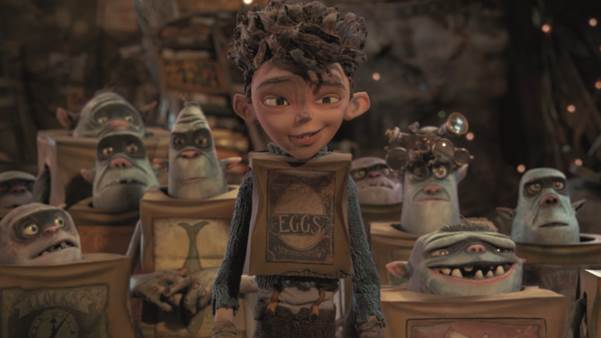Charming comedy “The Box Trolls,” released Sept. 26, tells the story of young boy Eggs and his closely knit troll family.
Joining the ranks of “The Nightmare Before Christmas” and “Corpse Bride,” the new stop-motion animated film “The Boxtrolls” opened in theatres on Sept. 26. Produced by Laika, the studio behind “Coraline” and “ParaNorman,” the film tells the story of Eggs (Isaac Hempstead-Wright), a young boy raised by a family of trolls who shell themselves in cardboard boxes. It’s a beautiful tale about family, identity and perception, perfect for children and the young at heart.
Set in the town of Cheesebridge, run by cheese-obsessed nobles called the White Hats, “The Boxtrolls” begins with the kidnapping of a local baby boy by the supposedly menacing Boxtrolls who inhabit the city’s sewers. A troupe of Red Hats, led by the evil Archibald Snatcher (Ben Kingsley, “Ender’s Game”), are charged with exterminating the town’s troll problem. The actually good-natured trolls raise the boy, whom they name Eggs, as their own, and he grows up believing he is just another Boxtroll. When Eggs inadvertently meets Winnie (Elle Fanning, “Maleficent”), the daughter of a White Hat, his whole world is turned upside down and he must reconsider his place within it.
Most films geared toward children tend to sugarcoat and simplify the complexities of life. For some reason, storytellers tend to think children cannot understand the grey area between black and white, when the reality is that children live in a world of grey until they’re told what’s black and what’s white. What is remarkable and refreshing about “The Boxtrolls” is that it’s not afraid to offer children a complicated world filled with complicated people—all while maintaining a sense of whimsy, wonder and adventure. Children’s films also tend to be riddled with overarching lessons, and “The Boxtrolls” is no different.
An important theme in the film is family. Eggs is torn between the world of humans, where he supposedly belongs, and his family of trolls who raised him. When he encounters Winnie, she describes to him what a “father” is, since he does not know the term. After she explains, he realizes Fish, the troll who adopted him all those years ago, always fulfilled that role in his life. Winnie then sees that her own father doesn’t even fit this criteria. Family, then, is something earned, not assigned. Winnie’s father might be that in name only, but it’s his actions that really count.
The film also lends its voice to something everyone grapples with: identity. Eggs struggles to find where he belongs when he learns he is human, not a troll. In a surprising example, the villains of the film also have their own identity crisis. Mr. Trout (Nick Frost, “The World’s End) and Mr. Pickles (Richard Ayoade, “The IT Crowd”), two of Snatcher’s henchmen, constantly question their own motivations throughout the film. They see themselves as the good guys, wondering if that reflects in their actions.
This leads into a bigger concept of perception. The people of Cheesebridge have an enormous, cruel prejudice against the Boxtrolls, who they view as monsters. Ironically, it is the townspeople—especially Snatcher—who are actually enacting the most fear and hatred. In a lot of ways, the humans are the villain of the story. This demonstrates that there are two sides to every story, with the identities of the heroes and villains depending on who is narrating. It also shows that those who are different—like the Boxtrolls—are not to be feared or hated, but to be understood and loved.
All of these elements combine to create a truly heart-warming film. It might sound cheesy, but it’s rare to have a film—especially one meant for children—that can evoke something so emotionally resonant. And this is all on top of a gorgeously and intricately animated film; the artistry behind it all is gob-smacking.
Even the chilly-hearted would appreciate the immense talent, patience and creativity demonstrated with every tiny movement in the film. “The Boxtrolls” is a remarkable piece of filmmaking and its story is refreshingly well done. It’s now playing in theatres everywhere. Be there, and be square.











